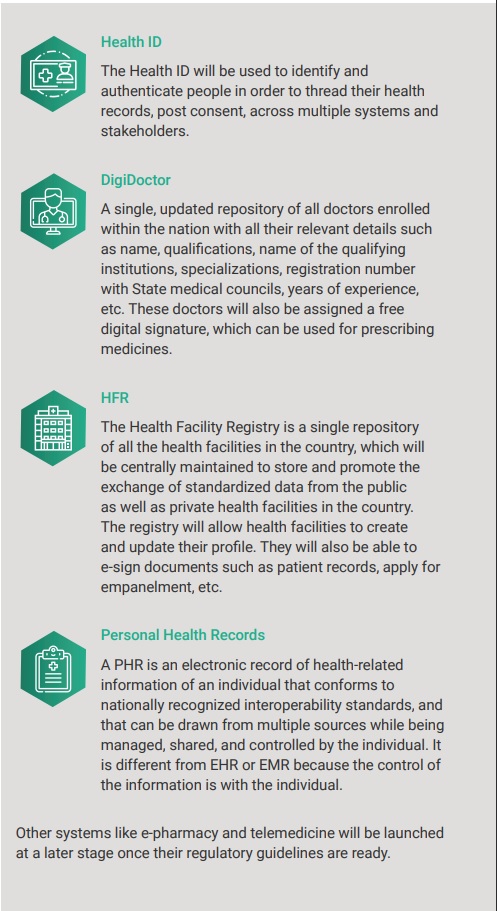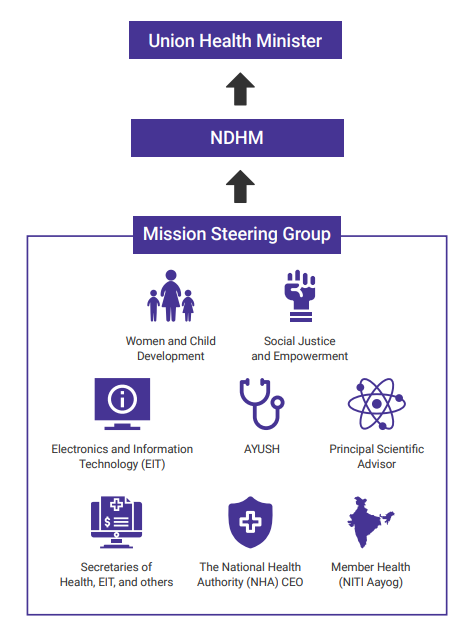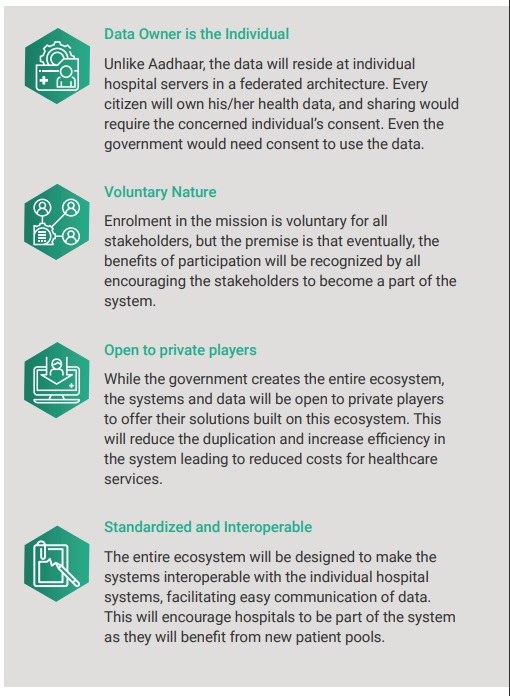On India's 74th Independence Day, Hon'ble Prime Minister Narendra Modi announced a significant healthcare initiative for India. He unveiled the National Digital Health Mission (NDHM), which is based on the National Digital Health Blueprint (NHDB) prepared by the Ministry of Health Family Welfare (MoHFW) panel to create a framework for the National Health Stack (NHS) proposed in 2018 by the National Institution for Transformation of India (NITI) Aayog. The NHS is essentially a set of core building blocks to be 'built as a common public good' that helps avoid duplication of efforts and achieves convergence among the IT systems of the diverse stakeholders such as the Governments, the Payers, the Providers, and the Citizens.
The NDHM will significantly improve the efficiency, effectiveness, and transparency of health service delivery and will be a major step towards the achievement of the United Nations Sustainable Development Goal 3.8 of Universal Health Coverage, including financial risk protection.
The mission aims to develop the backbone necessary to support the integrated digital health infrastructure of the country. It will bridge the existing gap amongst different stakeholders of the Healthcare ecosystem through digital highways.1
Scope of NDHM
The mission aims to develop, design, and implement core and common digital building blocks that are essential for healthcare. These blocks will be made available to the public and private ecosystem as a collection of cloud-based services. Each service will provide one key capability across multiple health services, which will be accessible via simple and open Application Interfaces (APIs).
Digital Systems
The mission envisages the creation of few core digital systems which are built to support timely access to safe, affordable healthcare for all citizens and will accelerate the country's progress towards Universal Health Coverage (UHC). The suite of digital systems consists of Health ID, DigiDoctor, Health Facility Registry (HFR), Personal Health Records, e-Pharmacy, and Telemedicine. Similar to the other healthcare programs announced by the Government, NDHM will also be rolled out in phases, and the following four primary systems shall be launched in the first phase:

Governance Structure
Based on the structure laid out by the NHDB, the mission will have separate arms for management and governance. The government arm will regulate the mission, while the other arm will manage operations and implementation. The structure will be as follows:

Finance
The Finance Ministry has already approved an initial budget of INR 470 crores for FY 20-21.
Launch
The mission has been officially launched by PM Modi on 15 August 2020. This is a pilot launch with the mission being rolled out in union territories of Chandigarh, Ladakh, Dadra and Nagar Haveli, Daman and Diu, Puducherry, Andaman and Nicobar Islands, and Lakshadweep. Basis the learnings from the pilot program, the mission will be rolled out throughout the country in active collaboration with the states.
Key Features
The mission has unique features which make it very attractive for all the stakeholders to be part of the system, some of which are as follows:

Our Views
NDHM is a revolutionary reform in the complicated and large healthcare sector of India. The mission aims to simplify healthcare access by creating a digital and robust technology-backed ecosystem of services.
Providing a Health ID will lead to significant benefits to the patient as the longitudinal medical history will be correctly recorded, leading to early detection and intervention in managing the person's health.
The initiative will bring focus on prevention and wellness, helping manage NCDs better. Healthcare costs can be reduced by avoiding duplication of tests, seeking multiple consultations, etc.
With the creation of DigiDoctor and HFR systems, the country for the first time will have a live and consolidated database of healthcare resources and infrastructure, which will help in policy planning to address gaps in the system.
When the data from HFR's and PM-JAY is combined, the government will get a real-time view of the country's disease burden. This data will assist in the creation of targeted policy and regulatory measures to effectively manage the disease burden as well as reduce the incidence of diseases over time.
The government should be lauded for creating an ecosystem that is completely voluntary and does not compromise with the security and privacy of the patient's data.
With the introduction of e-pharmacy and telemedicine at a later stage, the mission will bring more efficiency into the system by reducing multiple visits to the doctor and ensure that medicines sold are of standard quality, thereby reducing the risk of counterfeits. As the entire mission is structured as an ecosystem, it has the potential for allowing India to leapfrog the many challenges of introducing a nationwide Health Information System.
India is on a journey to modernize the delivery and consumption of healthcare services in the country. While the journey to a fully automated and digitized healthcare system is complex, and implementation needs to be meticulous, initiatives like Ayushman Bharat and NDHM are steps in the right direction.
The content of this article is intended to provide a general guide to the subject matter. Specialist advice should be sought about your specific circumstances.
